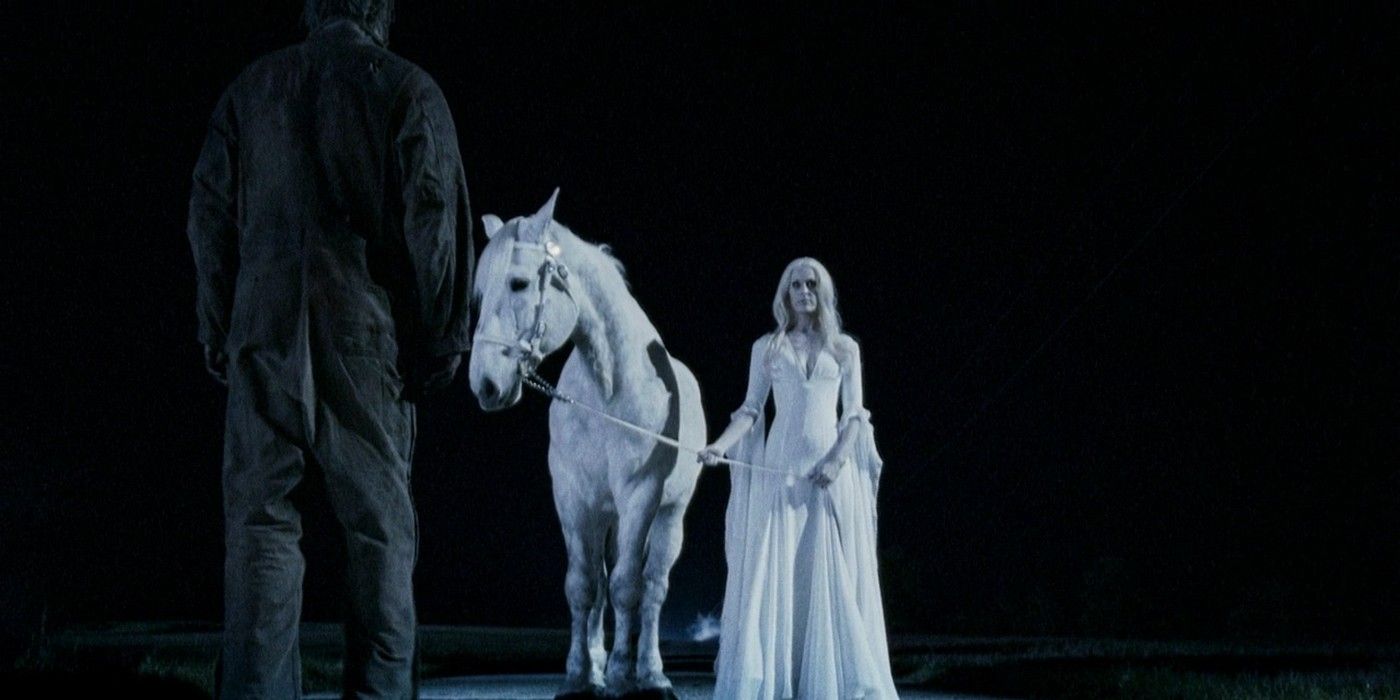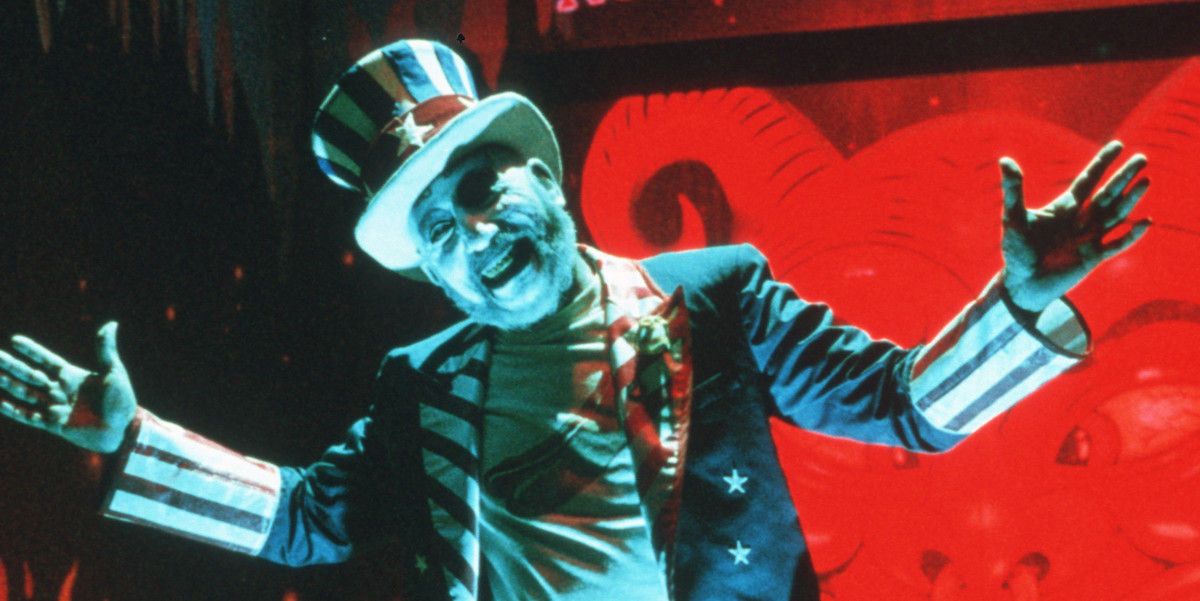
Rob Zombie’s career as a filmmaker is short but has been very divisive, and here's how his movies rank from worst to best. While some praise his style and vision to tell stories full of gore and with disturbed characters, others think he relies too much on shock value and doesn’t offer much beyond violent scenes. Truth is, both sides are partially correct: Zombie adds a lot of shocking scenes because that’s his style, and his characters are psychopaths that enjoy torturing others. Combined with music by him, his movies are a unique audiovisual experience.
Zombie made his directorial debut in 2003 with House of 1000 Corpses, and since then has directed a total of seven movies, including 2019's 3 From Hell. In between projects, Zombie has directed a faux-trailer (Werewolf Women of the SS for Grindhouse), a direct-to-DVD animated film (The Haunted World of El Superbeasto), one episode of CSI: Miami, a stand-up special (Tom Papa: Live in New York City), and a concert film (The Zombie Horror Picture Show).
Zombie’s filmography goes from remakes and retellings to original content, with some of them building their own mythology. Here are how his movies compare to one another (without counting the aforementioned in-between projects).

Zombie’s remake of Halloween 2 was more of a retelling, exploring both Laurie and Michael Myers’ stories as well as Dr. Loomis’. The story is set right after the events in Halloween before a time jump of one year. Laurie is still dealing with the aftermath of that Halloween night while Dr. Loomis takes advantage of the tragedy and releases a new book. Elsewhere, Michael Myers is having visions of his mother, with Laurie also experiencing hallucinations connected to Michael’s past and hers as well.
Zombie kept some details from the original movie, like Laurie and Michael being siblings, and took a lot of liberties with the rest of the story. What makes Halloween 2 sit on the last spot is that it has too many things happening in just one movie, and the addition of Deborah Myers (Sheri Moon Zombie) through visions along with a white horse was a failed attempt to expand on Michael’s backstory and his connection with Laurie, and ended up being completely unnecessary. Zombie’s intentions were good, but Halloween 2 ended up destroying what Halloween built.

31 was possible thanks to the support of fans, as Zombie used crowdfunding to cover part of the production cost. Initially believed to be a continuation of House of 1000 Corpses and The Devil’s Rejects, 31 was actually an original story completely independent from the others, but with some of Zombie’s frequent collaborators. Set during Halloween 1976, the story follows five carnival workers who are kidnapped by a gang of clowns and forced to play a survival game called “31”. The game lasts 12 hours, and the group is placed in a maze with different rooms where they must defend themselves from the “Heads”, which are murderous clowns whose goal is to torture and kill.
Surely, the idea is not anything that hasn’t been seen before, but it has Zombie’s typical bloodfest and the scenes in the maze feel claustrophobic at times, which can truly trigger fear in some people. It has the style of exploitation films but with murderous clowns (who are always scary, no matter the setting), and the character of Doom-Head is particularly scary and memorable. 31 doesn’t bring anything new to the genre nor to Zombie’s filmography, but it’s entertaining and has that fear factor that goes beyond graphic death scenes, so it’s worth the time.

The ending of The Devil's Rejects made Rob Zombie fans think that the leading trio of Otis, Baby, and Captain Spaulding had been killed by a hail of police gunfire to the tune of classic rock staple "Freebird." 14 years later though, 3 From Hell would reveal that the Fireflies were only mostly dead, each having somehow been nursed back to health, then tried and convicted of their many crimes. 3 From Hell sees Otis and Baby escape from prison with the help of Otis' half-brother Foxy (played by 31's Richard Brake). Unfortunately, Spaulding is executed before he can be freed, due to the late Sid Haig's failing health at the time.
Otis, Baby, and Foxy go on another killing spree across the US, before fleeing into Mexico, only to run afoul of a local crime lord seeking revenge for past misdeeds. 3 From Hell offers all the violence, gore, foul language, torture scenes, and 1970s music that fans have come to expect from Zombie, and it's by no means a terrible effort, but 3 From Hell's biggest failing is just how closely it sticks to The Devil's Rejects' template. Outside of a few key changes, it's almost the same movie, and considering that Rejects' excellent ending had to be retconned to make 3 From Hell happen, it feels like a missed opportunity. Hardcore Zombie fans will find a good amount to enjoy here, but the threequel ends up entirely unremarkable.

The Lords of Salem is very different from the rest of Zombie’s movies, but that doesn’t necessarily make it better. The story is all about witchcraft and satanism, and follows a DJ named Heidi (Sheri Moon Zombie) who receives a wooden box containing an album by a band called “The Lords”. As soon as she plays the record, she starts having strange visions and becomes entangled with a coven of ancient witches and Satan worshippers.
Out of all of Zombie’s movies, The Lords of Salem has the least amount of gory/violent scenes, and while it's visually his best work (and the score is really good as well), it’s yet another case of Zombie wanting to tell a bunch of stories and add a lot of backstory in just one movie. The Lords of Salem has gathered its own cult following who defend the movie for being different from Zombie’s usual slasher, violent, full of blood style – which is understandable, and the movie has its strengths, but the flaws are more and bigger, and an example of his storytelling issues.

In 2007, Rob Zombie did what many have wanted but didn’t dare to do: take John Carpenter’s classic horror film Halloween and make it his own, while paying homage to the original. Halloween is both a remake and a reimagining, and gave Michael Myers a backstory by following him during his time at Smith’s Grove Sanitarium after killing a school bully, his sister, her boyfriend, and his mother’s abusive boyfriend. It also expands on his family life and the relationship with his mother, Deborah. And because it’s also a remake, it travels 15 years after the murders with Michael now stalking Laurie and her friends on Halloween night.
Halloween’s strength is in the retelling part, which covers the first half of the movie. This provides a better understanding of Michael's personality, family background, and relationship with Dr. Loomis. Most viewers were expecting a full remake of the original movie, and that’s what hurt Zombie’s take, but in the end, he built his own Halloween universe and paid tribute to Carpenter’s work at the same time.

Zombie’s directorial debut was a strong one, and set the basis for the rest of his work. House of 1000 Corpses is an exploitation film with strong influences from classic horror movies like Texas Chainsaw Massacre and The Hills Have Eyes. Set around Halloween 1977, House of 1000 Corpses introduced the Firefly family and their love for torture and blood. The story follows a group of teenagers traveling across the country who find themselves living a real nightmare when they come across with the Fireflies.
House of 1000 Corpses was the beginning of a trilogy that follows the crimes of the Firefly family, and while it initially received a lot of bad reviews, it has gathered a cult following, with many critics and viewers changing their minds about it after revisiting it. The movie has big amounts of gore and torture, and succeeds in shocking the audience through that - exactly what exploitation movies do. It also introduced the most memorable characters from Zombie’s filmography: Baby, Otis, and Captain Spaulding, some of the most dangerous people one could ever encounter.

Two years after House of 1000 Corpses, a sequel titled The Devil’s Rejects arrived. The story is set in 1978 and reunites viewers with the Firefly family, who continue with their reign of horror, but with a few obstacles. After a raid on their home, only two members manage to escape while one is taken into custody and the rest are killed. Meanwhile, Captain Spaulding is somewhere else, but reunites with the surviving members of the family to continue their murder spree.
The Devil’s Rejects is, by far, Zombie’s best on many levels: it’s better written than the rest, the characters do have personalities and these are explored beyond all the killing and torture, and the acting is much better. The story is cohesive and takes its time without being sluggish, and it doesn’t try to cover too much, unlike others. It’s interesting that The Devil’s Rejects, Zombie’s second movie, is his best in terms of storytelling and most of the ones that followed had some major issues in that area. In the end, The Devil’s Rejects is there to prove that Zombie can truly tell exciting and terrifying stories both visually and narratively, contrary to what many critics and viewers believe.
https://ift.tt/2HADH0v
September 26, 2021 at 04:33AM




